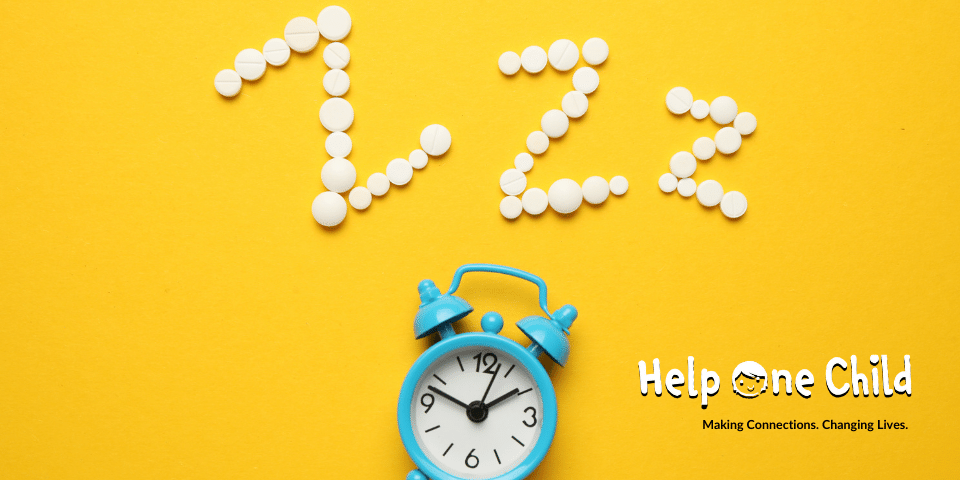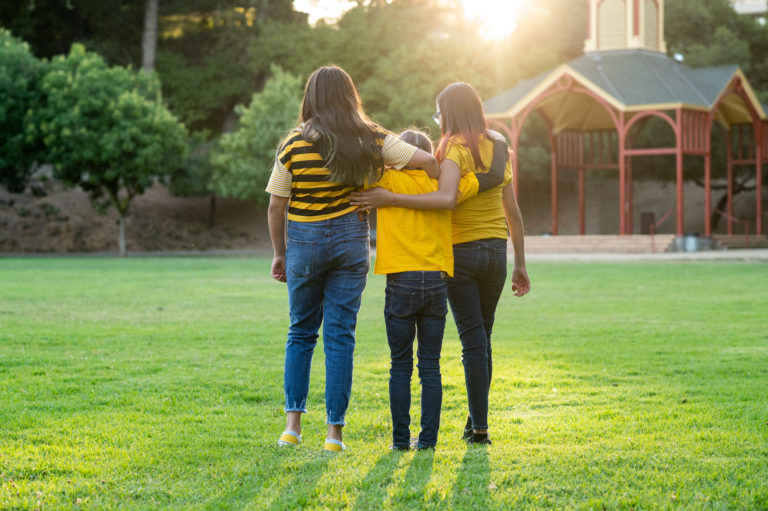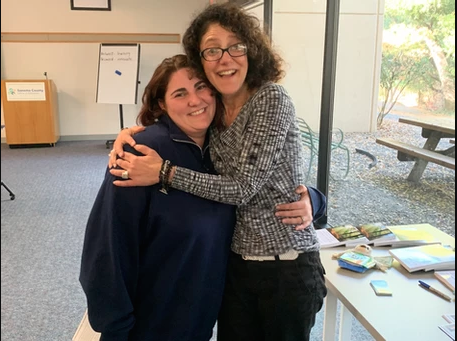Sleep is Essential
By Trish Jonker, MA, LCPC
Sleep is essential.
I often joke with my clients that if everyone got 8hrs of good sleep each night, most of the therapists in the world would be out of work. It is essential for our productivity, our mood, our immunity, our weight management, and our physical healing from illness. And yet… so often we don’t get the sleep we need. At times it can even be a cycle we cannot break! Our anxiety keeps us awake at night, and then we feel more anxious the next day because our brain didn’t get the sleep it needed to manage our thoughts & feelings.
So let’s start off by talking about our baseline. What should our sleep look like? Depends on how old you are…
- Birth to 3 months: 14 to 17 hours per 24 hours
- 4 to 12 months: 12 to 16 hours per 24 hours, including naps
- 1 to 2 years: 11 to 14 hours per 24 hours, including naps
- 3 to 5 years: 10 to 13 hours per 24 hours, including naps
- 6 to 12 years: 9 to 12 hours
- 13 to 18 years: 8 to 10 hours
- Adults: 7 to 8 hours
How does that look for your house? Is everyone getting what they need? If so, you can stop reading here. If not… let’s keep talking…
Here are a couple of fun facts I learned from The Teenage Brain by Jensen…
- Tweens: They have a shift in their biological clock (melatonin release & circadian rhythm & cortisol waves) and will start to appear energized around 7-8pm and will start to fall asleep later.
- Teens: This shift will continue through their teen years so that they will experience a delayed melatonin release until around 11pm! Yup, that means they will be energized around 8pm and not getting tired until about 11pm-12am. AND, melatonin stays in the teen brain for about 9hrs on average (8am). So if you try to talk to a teenager before 8am, don’t be surprised if they are a little foggy – they still have melatonin on the brain. Also, if they have to get up before 8am for school, they may be sleep deprived and might need after school naps or to catch up on the weekends. These won’t solve the problem, but they can help.
- Adults: Our melatonin is released around 9-10pm on average and stays in the brain for about 8hrs (6am). Which might explain some of the evening conflict that happens in the home of parents with teens. We are getting tired, as they are getting energized.
If you have someone in your home struggling to get the sleep they need, you may want to first discover the cause.
- Could be fear of the dark / night if that’s when trauma occurred
- Could be sensory (a lighting, sound or texture issue)
- Could be separation anxiety
- Could be a medical condition or side effect of a medication
If you haven’t already, I’d recommend checking in with your physician and/or therapist to discover if there are some solutions they suggest. In the meantime, let’s talk about some simple strategies that you can try at home.
Daytime strategies
Even though sleep issues feel like a nighttime thing, there are some daytime lifestyle changes that can help us sleep better at night. I’ll start with some obvious ones…
- Fresh air: Take a moment and think about how much fresh air you your kiddos are getting each day. Maybe increasing some fresh oxygen would be helpful?
- Exercise: This is key for emotion regulation. I am not a fan of the word “exercise” but I love to talk with my clients about “movement”. How much movement is happening for you & your kiddos? Some of my favorite movement strategies for sleep are swimming & yoga.
- Food: Try your best to limit or eliminate the use of Caffeine, Artificial sweeteners, Alcohol & Nicotine. All of these negatively influence sleep.
- Hydration: How much water are you all drinking each day? Dehydration can influence sleep.
- Vitamins: Omega 3 & B12 Complex are great to help regulate mood and there is some evidence they can help with sleep as well. Click on the links to find out how to increase these nutrients with food, or you can purchase them as supplements. As with many of these suggestions, you will want to check with your physician to see if they would be a good idea for your family, but they are good questions to ask.
Nighttime strategies
So now that you have tried a few of the daytime strategies, it’s time to tackle what happens when the sun goes down. One of the best strategies is to create a 1-2hr wind down routine. About an hour before bed it is time to start a “wind down”. A time when the family starts to slow down and help the brain become aware it is bedtime. During this time you will want to…
- Limit Blue light screens: Blue light screens on devices such as… tell your brain it is daytime and can delay the release of melatonin. So you want to change the screen or get off them completely so that your brain is aware it is now night.
- Pajamas: During this wind down time you want to change into clean & cozy pajamas. If you or your kiddo has sensory issues you might want to work on what feels clean & cozy to them. You may also want to take a moment and think about bedding. Does it feel clean & cozy? What changes could you make in this area to help everyone feel better as they climb into bed?
- Relaxing Activity: This is different for a lot of people but during this time before bed you will want to engage in a relaxing activity. This might be reading or talking, this might be listening to a podcast or coloring. Take some time exploring various activities that will be relaxing to you and your family.
- Shower/Bath: Some people love to take a hot shower or bath before bed but this can actually create sleep issues. If you or your family fall into this category, I’d suggest keeping the water temperature more on the warm than hot side and trying to get it done at least an hour before bedtime. We need our bodies to be cool in order to fall asleep and so if we are warm from a hot shower, we will struggle.
- Temperature: In fact the ideal room temp for a child to sleep is 65-70F and for an adult is 60-67F. So ideally, you would want to start cooling the household temp in that 1hr before bed so everyone can cozy up under some blankets and fall asleep in a cool room.
- Bedtime Snack: Some people have issues with their blood sugar during the night or have trauma related to food insecurity, so a bedtime snack can be really helpful. Check out my other blog on Snacking if you haven’t already, but for a good bedtime snack you will want something that is a Protein + Healthy Fat + Healthy Carb. I love to recommend breakfast sandwiches and protein shakes. Or you may just want a warm (not hot) beverage like an herbal tea or some warm milk. But try a few things out and find what works for your family.
Sensory: If you or your child is struggling with a sensory issue run through these ideas and see if they help…
- Sight: Lighting – If they want more lighting (could also be from trauma) maybe keep the light on with a dimmer, or have them pick a fun nightlight. If they want less lighting try taking away the night light or getting black out curtains or an eye mask. Get their input on what pictures are on the wall and if they are calming or stimulating.
- Sound: Can you change the sound in the bedroom to be more comfortable? Some people sleep better with fans or noise machines (waves, white noise, rain, etc) and ASMR (these are sounds you can get on YouTube or other apps that some people find relaxing); There are a lot of apps out there focused on creating calming noises for sleep. Personally I use Headspace but you can find what works best for you. If you have teens who want to listen to the radio at night but you are trying to keep them off their smart phone, consider getting them a good old fashioned clock radio.
- Touch: try to increase the coziness level of the room – which is often different for everyone.
- Taste: think about snacks or even the toothpaste they use and what is a lingering taste in the mouth at bedtime.
- Smell: For those comforted by smells an essential oil diffuser can be helpful. Many find the smell of lavender to be helpful with sleep so using that or a blend that contains lavender is a great idea.
For many of our kiddos, trauma has increased their anxiety at bedtime, so a therapist can be helpful at giving you strategies that will work for your unique situation. Creating connection and safety at bedtime will be essential so that the body can rest and fall into sleep.
If you are interested in talking more about these strategies or looking at how to build connection to reduce anxiety, feel free to reach out to me at connect@trishjonker.com for more information or to book a session today.
Trish Jonker has a Masters degree in Counseling Psychology and is currently a licensed counselor in 11 states and is certified in Integrative Medicine for Mental Health. But she’s not just a counselor, for the past 10yrs she has also been a foster mom / legal guardian to 8 kiddos (who are now ages 10 – 24). So taking her academic & professional work and combining it with her personal experience, she has created a counseling practice specializing in supporting foster & adoptive families through telehealth & in person sessions. You can learn more about their story in her book, The Call to Love (available on Audible, Amazon & iTunes or at trishjonker.com). Trish is available for telehealth services and is a valued contributor to Help One Child’s blog and podcast.









